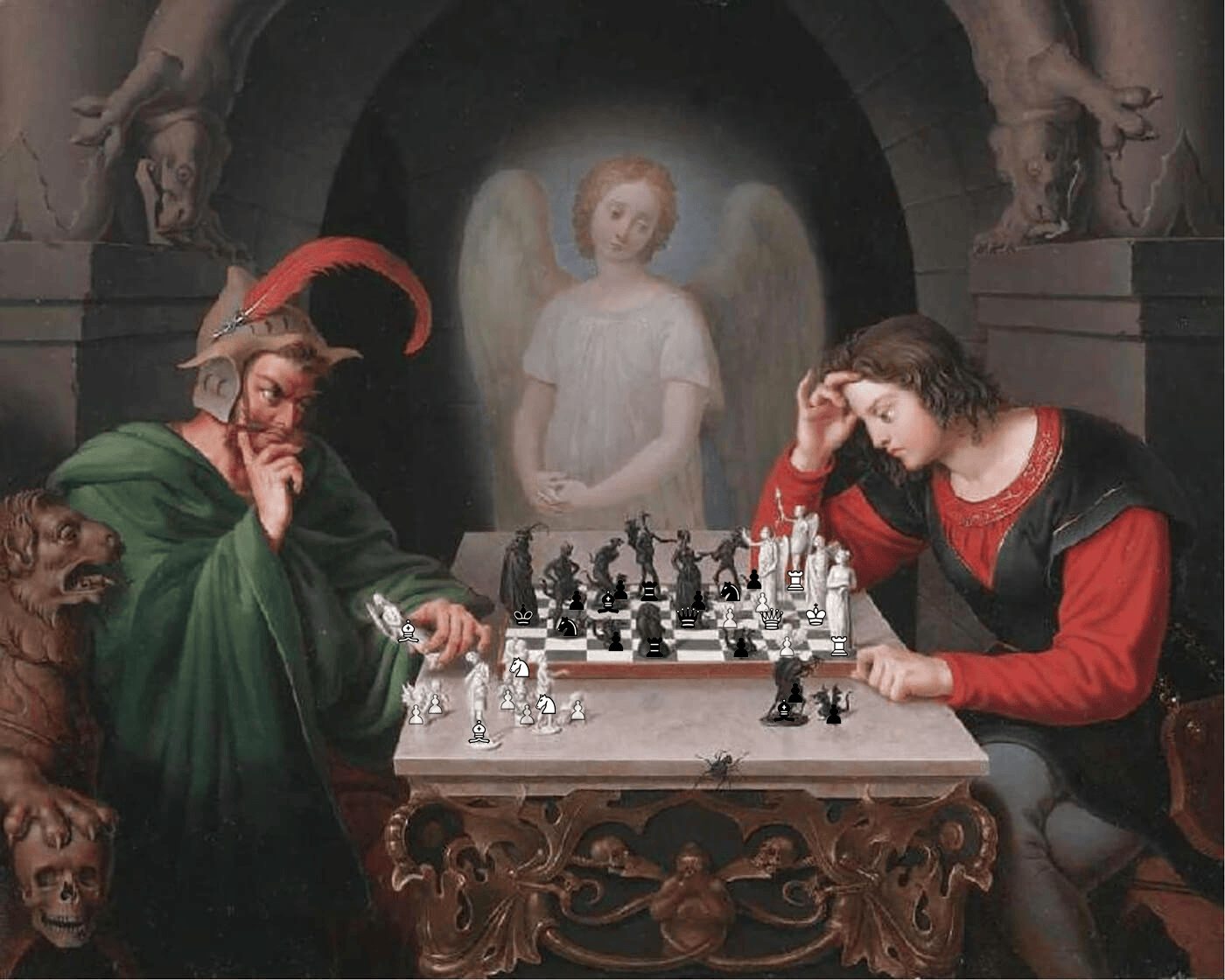Interesting game, sorry I don't know the answer to your question. I was just wondering is there is a good chess book which is based on Paul Morphy games? I came across one, but it was mainly history about his life not so much games or material on which I could improve my own games. Thanks in advance.
Game of Life - Board position and Paul Morphy

Morphy: Move by Move
https://www.newinchess.com/media/wysiwyg/product_pdf/7625.pdf
http://georgiachessnews.com/2016/12/01/review-morphy-move-by-move-by-zenon-franco/
http://dev.jeremysilman.com/shop/pc/Morphy-Move-by-Move-p3927.htm
Chess Phenomenon Paul Morphy
https://shop.chess.co.uk/Chess-Phenomenon-Paul-Morphy-Otto-Dietze-p/cb07212.htm

I had covered this story in some detail in a two-part series for my blog 10 years ago: https://www.chess.com/blog/batgirl/die-schachspieler-and-the-morphy-anecdote
Then Michael Goeller looked further into the position in his Kenilworthian Blog: http://www.kenilworthchessclub.org/kenilworthian/2009/10/paul-morphy-vs-mephistopheles.html

Notes on board position
- Kings look like the players, so are definitely on D1 and D8
- Pawns are obviously the small ones, but pay attention to the tails of the black pawns, as the Kenilworthian article didn't see the black pawns behind many pieces.
- Black pawns on A3, B6, E4, F7, G6, H2, and 1 visibly captured. 1 black pawn is missing
- White pawns on A2, D3, and 5 visibly captured. 1 white pawn is missing
- Pieces are all ambiguous
- Black has pieces on A5, C7, D4, F6, G5, G2, and 1 visibly captured, 0 missing.
- White has pieces on A1, D2, H1, and 4 visibly captured, 0 missing.
- D2 and H1 look like the same piece and are likely white rooks.
- D4 is a large female black piece, so is likely the black queen.
- A1 is the largest white piece other then possibly the piece being held by satan, so I think A1 is the white queen. This means we know the position of all of white's pieces.
- The black piece on D5 doesn't seem to have a twin, and people have guessed it to be the knight, with the other knight the only captured black piece, but as all black pieces are on black squares, the captured piece is likely to be black's light square bishop.
- Other than that, all of black pieces are just guesses, as they all look similar to each other.
It is likely there is another pawn for each side somewhere, but I couldn't see it in the resolution of the painting.
Black seems to be winning no matter which of black's pieces are where.

have a look here for some detailed dive into what each figure may be, based on different descriptions and indeed perhaps there might be different images that are being talked about.
below is the closest i got in terms of showing which piece is what, still missing 1 black pawn anyway, if anyone have any idea or can see it somewhere would love to hear your thoughts ![]()

there are also links to game simulations based on each 'deciphering' of figures' position
let me know what do you think


Here is my interpretation:
Since Satan is holding another seemingly queen, I can assume that that was whites last unaccounted for pawn in the game and it was promoted and was taken by the king since it's the only one on the back rank and it would make sense since it's starting position is on E8. Also noting all the positions black is on, everything except their pawns are on black so I have to assume the C8 starting bishop for black is the taken one on the side.


There is an painting "Checkmate" that depicts Satan playing against a young man. The board position is supposed to appear hopeless but it is said that Paul Morphy when seeing the painting studied the picture, called for a chess board to be set up and some time after declared the young man has not yet lost, and that Paul Morphy could win the position of white.
Here is the original painting
Here is an picture of the someone trying to diagram this picture
But even if this is the position that Morphy studied, seeing a checkmate in 6 moves with the obvious win for the evil black would be trivial for the 1888 chess players much less Morphy.
Can anyone make out what position Morphy studied, and is the game winnable?